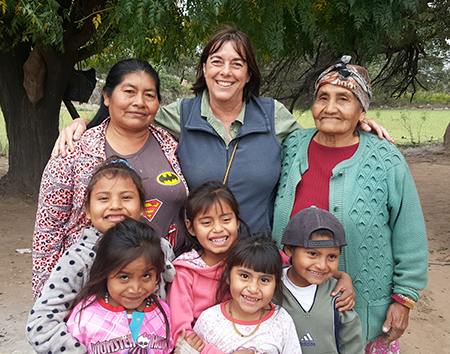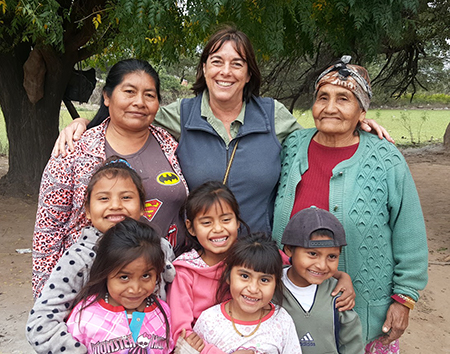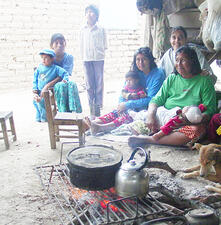
I use [small group work] in all my classes, from 25 students to 150 students. It’s an excellent tool and goes with my own pedagogical approach by putting the learning experience into the hands of students.

Q: Tell me about using small group work. Do you use it in all your classes?
I use it in all my classes, from 25 students to 150 students. It’s an excellent tool and goes with my own pedagogical approach by putting the learning experience into the hands of students. I invite them to own their learning and through these exercises they can have more agency.
Q: Did you always use group work in this way?
Always. The material I teach is very dense, and it gives the students an opportunity to break it down into chunks. It also is a way to find creative ways to incorporate the material. There are many different ways to use it.
Q: You call this “community learning.” Why do you like that term?
Community learning is about learning from each other. I have been learning from my students for thirty years and keep learning about how to best use the approach. It is a mix of Paulo Freire [Brazilian educator and philosopher] and indigenous pedagogical approaches. I try to emulate the discussions around the fire in indigenous cultures. Sometimes I wish I could have a fire in class!
Q: Tell me about how this approach lowers the stakes for the students.
The students feel like they can speak their mind without the pressure of being right. I do it so frequently that they relax and talk freely. I don’t even walk around, because I noticed that when I approach, their body posture changes and tightens up. This is their time. They also know that there is no grading of these activities.
Q: You’ve said before how this approach strips down the hierarchy and increases engagement.
Absolutely. It works for introverted people like me, who drain their energy when speaking in public. They have to talk but are not as exposed. It’s another bonus of small group conversations.
Q: What ways does it make our jobs different?
It’s your opportunity to listen to them. It’s a little window into their minds that we seldom get, and it’s spontaneous. These small groups reveal things that are not obvious about the way I explain things or about what topics move them more than others.
 Q: How do you keep everyone involved?
Q: How do you keep everyone involved?
At the beginning of class I remind them that this is an opportunity for participation, and I have 5% of the final grade. But I tell them that verbal participation is just one aspect. They keep journals, with things to remind them of class discussions, things they wonder about the subject. I can see the least participatory students with rich thoughts in their journals.
Q: Are they formal or informal groups?
Totally informal and I regularly mix them up, so they are not always the same.
Q: And what kinds of feedback do you give?
It is a very dynamic practice. Sometimes it happens organically. Let’s stop, I’ll say, and discuss it in small groups. I have it lucky because the things I teach are particularly engaging for their lives. I teach about sex, I teach about bodies, I teach about reproductive health.
Q: Do you use any technology?
No technology. Students rotate leading the discussions. In one small class, the students used Kahoot and a version of the Taboo board game.
Q: You have already touched on this, but how does your field of Anthropology inform the practice?
It’s the way we do it in the field. It is the way young people learn, the way knowledge is transmitted from older generations to younger generations, but it is also co-created in a way. So, when I participate in chats about my own research in northern Argentina, we sit around the fire, we pass the maté drinks, and everyone has the opportunity to say something, and the result is very rich. It sounds a little idyllic, but you can incorporate elements of it. Work in small groups gives you a taste of how learning may happen in a more relaxed setting.
Q: Anything else you’d like to say to other faculty about this process?
Many times as professors we feel, how can we do all this when we have so much material to cover? Don’t be afraid to cut down on content. Make it part of your teaching. Provide these opportunities to engage with the material in a different way.
Professor Claudia Valeggia specializes in Biological Anthropology. In her research, she explores interactions between human reproductive biology and the cultural and ecological contexts in which it develops. Originally from Argentina, she received her PhD from the University of California, Davis, and has been teaching at Yale since 2014.
